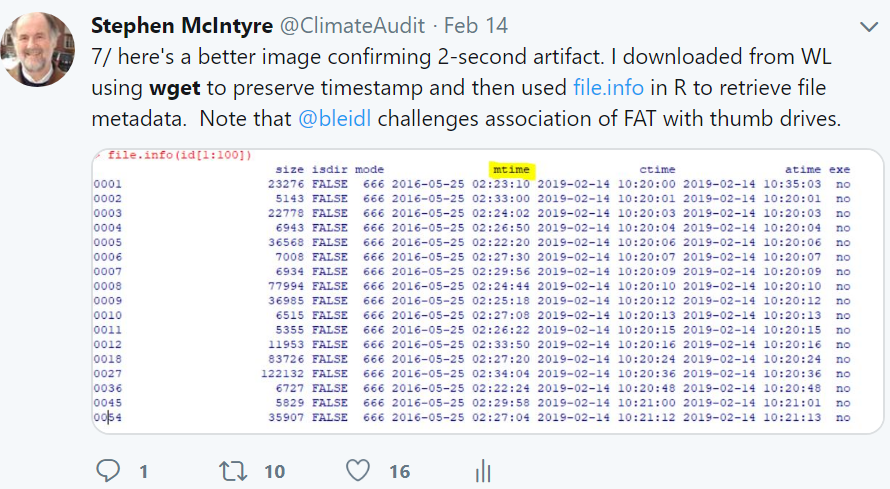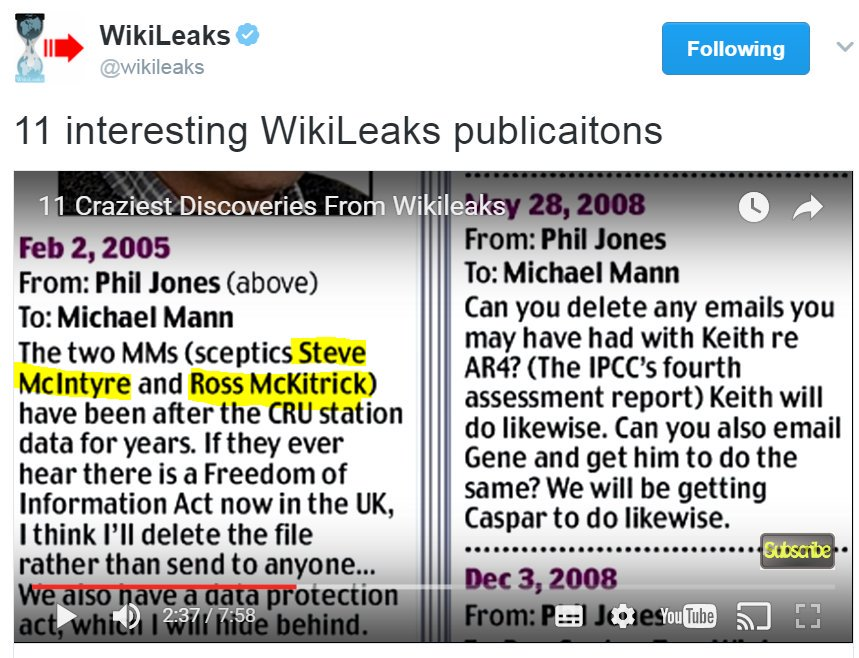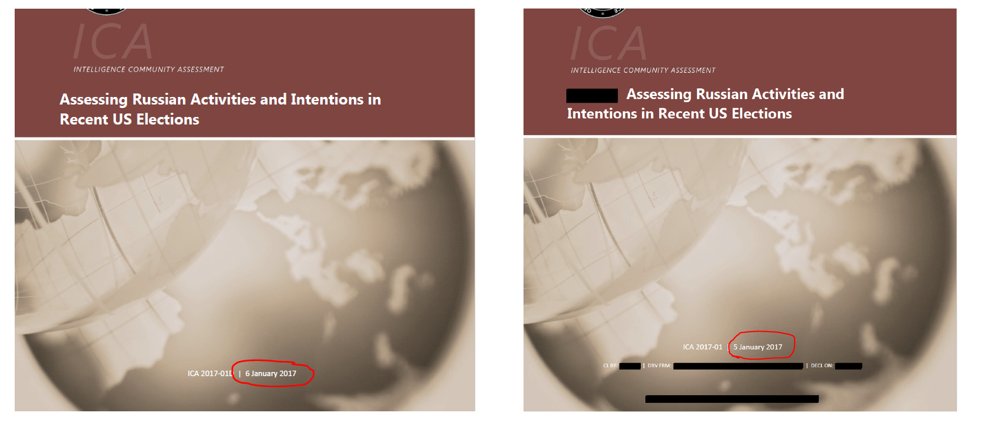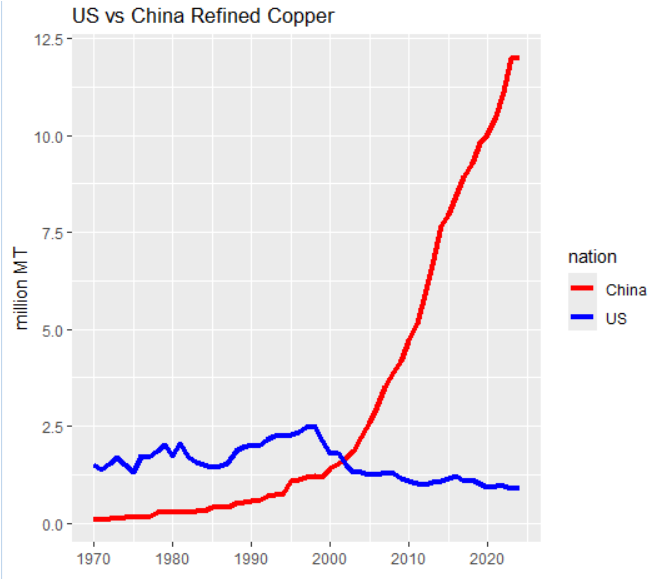1/ charge against Assange is violation of 18 USC 1030a. Indictment was filed on March 6, 2018 for incident on March 7, 2010, barely meeting 8-year statute of limitations. Despite clemency, Manning appealed her 1030a conviction. Issues seem relevant to charge vs Assange.
2/ 1030a, under which Assange was charged, is an anti-hacking law that requires that access to computer be "without access or exceeding authorized access". 

3/ Manning didn't HACK into DoD computers. M had high-level clearance and was entitled to access the files delivered to Wikileaks. M's 1030a conviction - and this is little known - was on questionable technicality: use of widely available Wget to access files available on portal
4/ Judge didn't consider whether there would have been 1030a violation if M had used portal to download the 75 files retrieved using Wget, reaching decision on basis that use of Wget utility was "exceeded authorized access". 

5/ See discussion in May 31, 2018 decision fas.org/sgp/jud/mannin…, Manning Appeal Brief Sep 5, 2018 eff.org/files/2018/09/… and Amicus Brief Aug 30, 2018 eff.org/files/2018/09/…
6/ M's appeal argued that Wget software didn't give M access to any files that M wasn't entitled to see, and that the court had made an error of fact to the extent that it thought that Wget evaded password authentication. (It doesn't). Case seems quite plausible. 

7/ there is an important inconsistency between US circuits over meaning of "exceeds authorized access". Under "broad" interpretation, satisfied if use is improper e.g. leaking. Under "narrow" interpretation, satisfied only if access to information gained thru improper means 

8/ M's military court stated that this was new issue for them and that federal Circuits were divided. They noted that Fourth Circuit (which governs EDVA) had adopted "narrow" interpretation. This would be helpful to Assange. 

9/ Manning's downloading of State Dept cables is one of the key incidents in Assange indictment narrative. DoJ stated that Assange told M that "curious eyes never run dry" and that M subsequently accessed State Dept cables. 

10/ M had legal access to State Dept cables thru portal. No evidence that Assange was involved in M's decision to access cables thru Wget (which is what M was convicted for - questionably.) M was clearly guilty of other offenses but the 1030a seems questionable.
11/ the other incident in Assange charge is his attempt to crack a password for M, but there's something curious here. Doesn't appear that password in question would have given M access to anything that M didn't already have access to (!) - only disguise as a different user 

12/ Assange indictment observed that "army regulations" prohibited M from circumventing security mechanisms and from sharing passwords. Watch the pea. To extent that all/part of incident is breach of "army regulations", it was relevant to M, but not to Assange under 1030a 

13/ my overall (interim) take: US success in Assange extradition case is not a gimme. US framed indictment narrowly in order to avoid arguing about their real beef with Assange. US-UK extradition treaty requires that case be limited to charges in extradition, but it seems
14/ implausible that US has any intention of limiting their interest in an extradited Assange to the password incident. More likely, as soon as Assange arrives in US, there would be barrage of superceding indictments, with US thumbing its nose at world opinion as it has elsewhere
15/ nor would UK government have much recourse once Assange was extradited. Not that quislings of May regime would be inclined to object anyway.
16/ however, there is an extant and distinguished legal tradition in UK. There are many UK judges who are acute enough to see what is really happening here. I expect that the Assange extradition hearing will be epic.
17/ here's a quote from Manning Amicus Brief from Fourth Circuit (>EDVA) decision WEC Carolina which pertains to password issue. Issue for 4th would be whether sought password gave M access to unauthorized material, or merely disguised. Indictment only pleaded disguise. 



18/ ironically, I first used wget a few months ago in order to download from Wikileaks 😀. wget didn't give access to these documents; it is merely a way to download documents while preserving original modification-time metadata. Manning appeal re wget seems appropriate. 

19/ here's another thought on curious fact situation on password. Based on premise that Manning was authorized to access documents, but wanted to disguise his identity when accessing documents which he was authorized to access. And that Assange's password help limited to disguise
20/ Assange's offer to help Manning crack a password to enter area to which he was authorized under fraudulent identity is an offense, but the offense is identity fraud (USC 1028 law.cornell.edu/uscode/text/18…) not USC 1030a. 

21/ while both are serious offenses, there's an important difference in statute of limitations. Under USC 2332b(g)(5) law.cornell.edu/uscode/text/18…, USC1030a has an eight-year limitations, whereas USC 1028 is only five years (!). 

22/ the distinction is highly relevant to extradition. Indictment only pled that purpose of breaking password would be to disguise identity, not to expand access to documents. 1028 was logical charge, but they needed 1030a for statute of limitations. As always, watch the pea 

23/ in 13 above, I referred to principle in US-UK extradition treaty in which limits US right to pile on charges after extradition. (I've deleted prior tweet 23 in which I had lost track of reference and withdrew assertion.) But original point was right h/t @bleidl. 

24/ however, Rule of Specialty is not a right which Assange can assert, only executive branch of UK government. (Courts not involved.) One can safely assume that quisling UK government will grant whatever US imperium demands. I.e. limiting extradition charge to single computer
25/ offence is nothing more than a charade by US and UK governments to disguise true intentions from UK courts.
26/ a battleground issue in extradition case is likely to be Article 4 of US-UK extradition treaty which states that UK courts shall refuse extradition if they determine that request for extradition was "politically motivated". Lots of evidence of this.
state.gov/documents/orga…
state.gov/documents/orga…

27/ thread on Rule of Specialty here
h/t @bleidl
https://twitter.com/RickPetree/status/1116704236526555136
h/t @bleidl
None of the dozen or so commentators who I listened to on US news television today understood that neither Manning nor Assange HACKED into DoD computers. What a wasteland of false information.
28/ maybe this would be good time to re-mention Wikileaks' list of their 11 greatest hits ("interesting publications"): look who's mentioned 😀
Despite claim, Wikileaks had zero role in release of Climategate emails. News disseminated thru climate blogs.
https://twitter.com/wikileaks/status/828229304949547008
Despite claim, Wikileaks had zero role in release of Climategate emails. News disseminated thru climate blogs.

29/ Intercept (unsurprisingly) makes same point as me about password incident. Greenwald has been following this for years.
theintercept.com/2019/04/11/the…
theintercept.com/2019/04/11/the…

30/ Alexa O'Brien has enormous and essential set of Manning documents alexaobrien.com/manning
31/ In opening statement alexaobrien.com/archives/1283, prosecutor said that "evidence will show that Manning with the help of .. Assange attempted to devise a way to browse SIPRnet anonymously". 

32/ Prosecutor says that Manning asked Assange "Any good at LM hash cracking?". Prosecutor added that "LM ..stands for Land Management." 

33/ Manning prosecutor said that Assange replied: "We have rainbow tables for LM, " adding that an "LM hash is essentially the way that a Windows computer stores passwords" 

35/ Manning's supervisor Stephen Lim testified that he sent SIPRnet link to Manning and that the diplomatic cables which were subject of M's 1030a conviction (Specification 13) had no password. No wonder they want to blame Assange.
alexaobrien.com/archives/1735
alexaobrien.com/archives/1735

36/ violation of AUP was one of key points in Manning's 1030a conviction. However, prosecutors were apparently unable to locate AUPs for Manning (or his platoon). Strange.
alexaobrien.com/archives/2325
alexaobrien.com/archives/2325

37/ Evidence from superior that Manning was allowed to "surf the SIPRnet".
alexaobrien.com/archives/2325
alexaobrien.com/archives/2325

• • •
Missing some Tweet in this thread? You can try to
force a refresh

























